Middle East
As children, we dreamed of our futures. Then an Israeli bullet took Malak’s | Israel-Palestine conflict
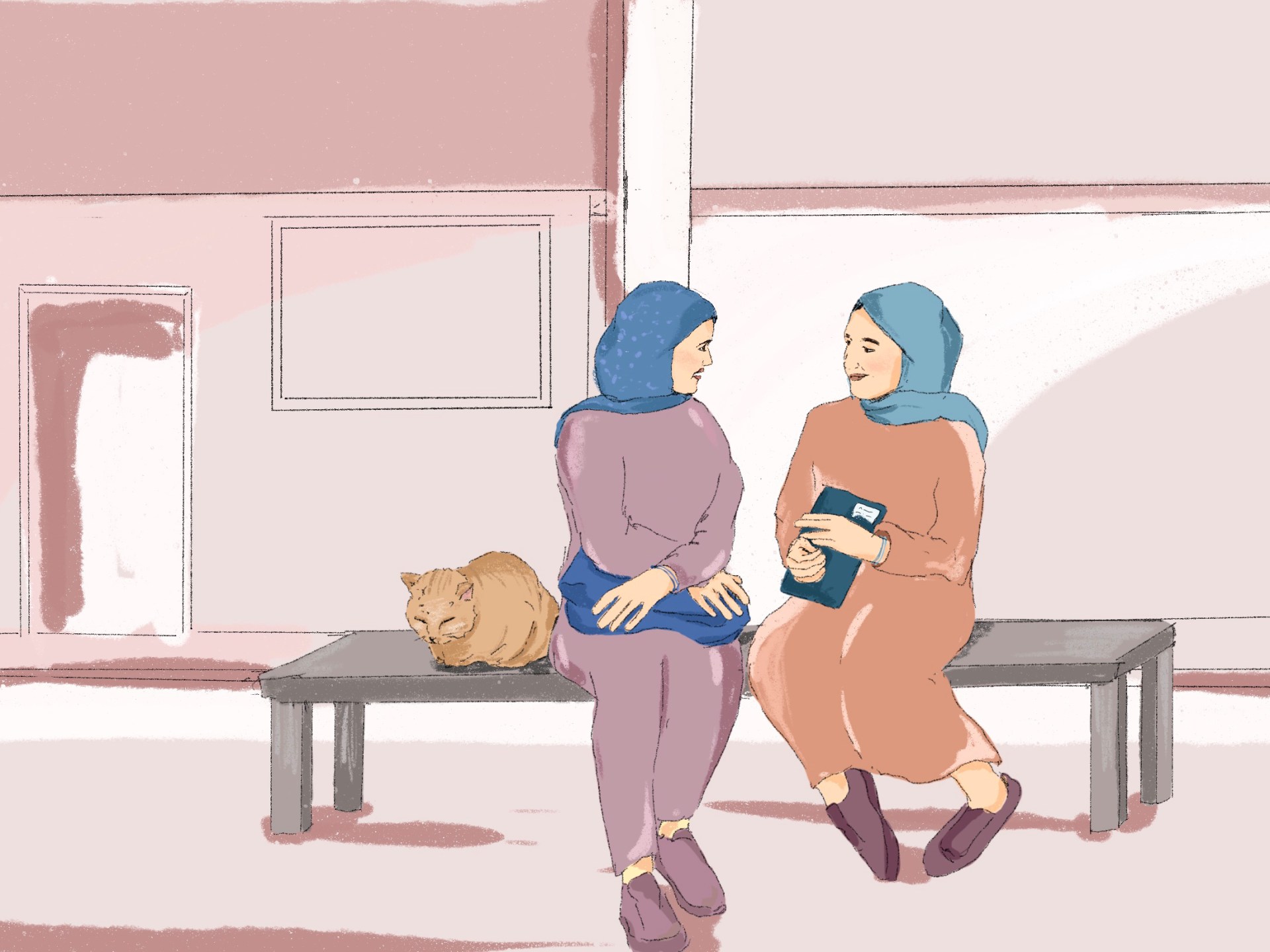
Malak was like a sister to me.
We were nine years old when we met at the Hamama School for Girls in the Sheikh Radwan neighbourhood of Gaza City. It was 2019 and Malak’s family had just moved into an apartment three buildings away from mine. When she joined the school, I introduced myself, and from that day onwards, we would walk to and from school together every day.
Back then, Sheikh Radwan seemed like our entire world. We had beautiful buildings and shops where we’d buy sweets. Families knew each other. Children played together. We knew all our neighbours and called the adults among them aunts and uncles.
At first, I thought Malak blushed easily because she was new to our school. But as time passed, I understood this was part of who she was. Malak was shy and quiet, gentle and caring. Her name means “angel”. It suited her.
She cared about our classmates and whenever one of them was upset, Malak would comfort them. I often saw her helping other children with their homework.
I was closer to Malak than to the other girls at school because we both liked the same subjects: maths, physics and music. I have a passion for physics, while she excelled at maths. We both played the piano. I specialised in classical music, while she loved the traditional music of Palestine.
Sometimes, we played music out of tune. I remember once joking that she should stick to her dream of becoming a nurse rather than a professional musician. She laughed and agreed with me. We often made each other laugh.
But behind Malak’s smile, there was a sadness as if she were carrying a burden, a sorrow she kept to herself.
‘Why this sadness, Malak?’
One day in September 2023 we were sitting in the schoolyard, as we often did in breaks between classes, talking about our dreams for the future. We had just finished a maths test. The school day hadn’t ended, but I could see that Malak wanted to go home. She was holding back tears. “Why this sadness, Malak?” I asked her.
She looked first at the sky and then to me and replied. “My brother Khaled was born with a congenital heart defect. He’s just one year older than me, and he’s very sick.”
I had visited Malak’s home many times, and I knew that her brother was weak and often ill. But I didn’t know how serious his illness was.
When she told me that he might die, I put my hand on her shoulder. “Who knows, Malak?” I said. “Maybe we will leave this world before he does. Death does not care about age or illness.”
I never imagined that my fleeting words would soon become a brutal truth.
That day in the schoolyard, we spoke for hours. Malak talked about becoming a nurse and returning to Ramla, her ancestral home, from where her family had been displaced during the Nakba. She told me she wanted to care for sick people, especially children. I thought that she would make a perfect nurse because of her kind nature.
When the war began, we each sought safety with our families and lost contact. I was displaced with my family more than 12 times. We were forced to leave our home in Gaza City and fled to other places twice in the same city. Then to Khan Younis, Deir el-Balah, Bureij refugee camp, al-Mawasi, and now Rafah, from where I write these words.
Throughout these displacements, I tried to reach Malak, but I could never get through. Both her and her mother’s phones were out of service.
Our school was turned into a shelter for displaced people before it was destroyed by Israeli air raids on August 3, 2024. Even after this terrible news, I could not reach Malak.
Finding each other again
After more than a year of being unable to contact my friend, one morning in January 2025, while in our shelter in Rafah, I received a call from an unknown number. I was overjoyed when I heard Malak’s voice. She was happy and excited to speak to me, but she sounded exhausted.
I asked her how she and her family were and about her brother Khaled, remembering he needed medication. She told me they were living in a tent in the al-Mawasi area of Rafah, just a few kilometres from where my family was sheltering.
Malak was eager to talk. She shared how her family had been repeatedly displaced across Gaza. Our conversation also took us back to the good days in Sheikh Radwan – to our homes, our school and everything we used to do before the war.
Before ending the call, I promised to visit and bring Malak and her family to our shelter. I thought it would be safer for them to be in the same shelter as ours because our building is made of stone whereas Malak was living in a tent.
Two days later, on January 8, I made plans with my mother to visit Malak. I called her to confirm. Malak’s younger sister Farah answered, crying bitterly. “Malak is gone,” she sobbed. “She was martyred at dawn by a bullet while she was sleeping in our tent.”
I couldn’t hear. Or maybe I didn’t want to believe what Farah was saying. My heart ached beyond words. I hung up the phone, feeling choked by my tears. I turned to my mother. “Malak is gone.”
Together, in death
The next day, my mother and I went to visit Malak’s family to offer our condolences. We found their tent torn apart by bullet holes. But no one was there. Their neighbours, who were also in tents, told us that Khaled had passed away that morning. His illness had worsened without access to medicine, and grief over his sister’s death had broken his spirit. The family had gone to bury him.
I remembered my words from our schoolyard conversation. I never imagined Malak could die and that Khaled would follow her so soon after. They were buried side by side. Even in death, Khaled would not be parted from her.
Who fired that lethal bullet at Malak? Why did they kill her? Was she a threat to the soldiers while she slept? Did they fear her dreams of returning to Ramla?
Farewell, my dear friend. I will never forget you. I will plant an olive tree in your name, and I will bring those who remain from your family to be with us and care for them as you would have done.
Middle East
Thousands gather for centuries-old Holy Fire ceremony in Jerusalem | Jerusalem News
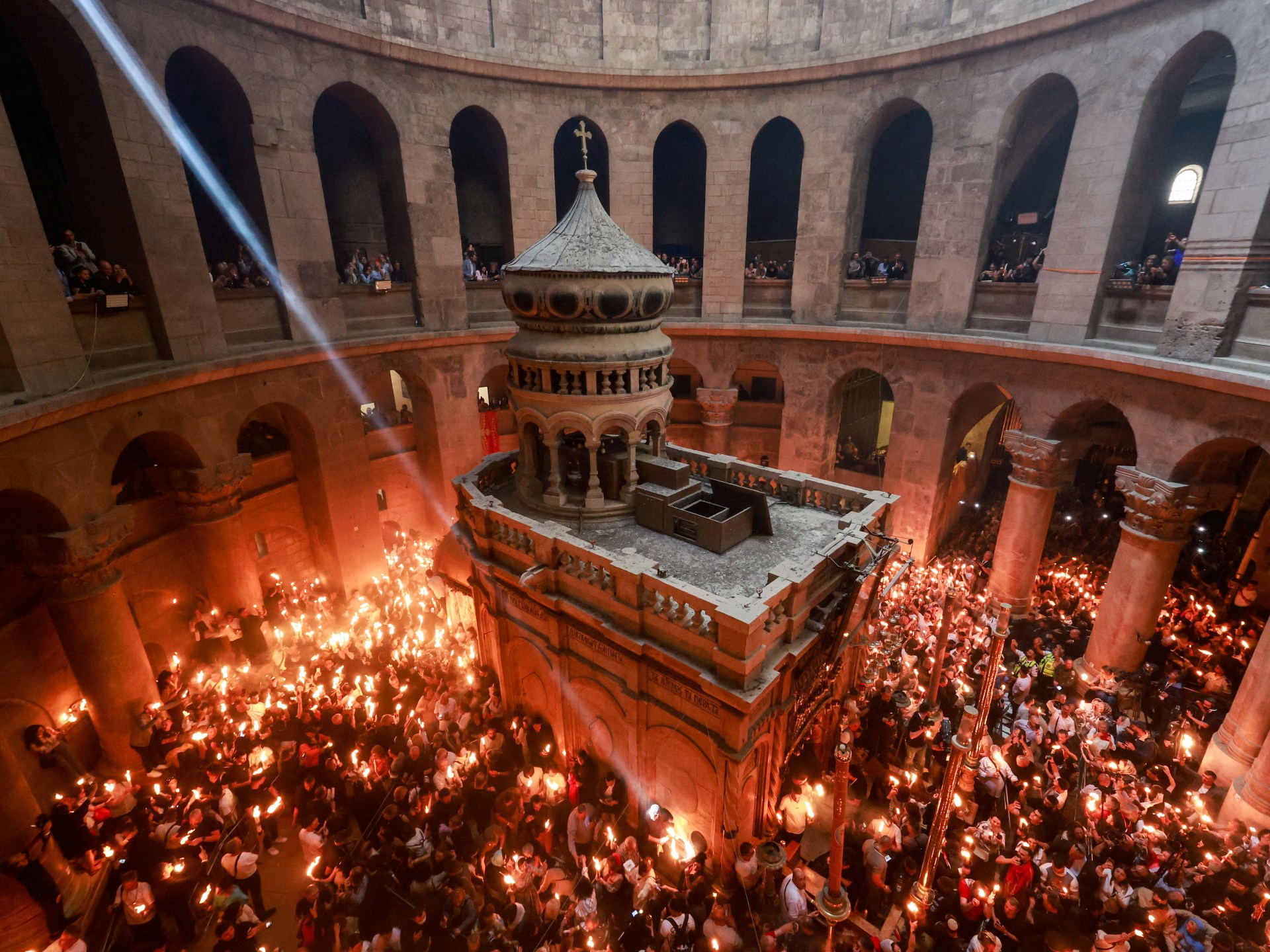
Thousands of Christians gathered in the cavernous Church of the Holy Sepulchre for a centuries-old Holy Fire ceremony.
Holding unlit candles, they packed into the sprawling 12th-century basilica built on the site where, according to tradition, Jesus was crucified and buried.
In near-total darkness, the Greek patriarch entered the Holy Edicule and emerged with two lit candles. The flame was passed from one candle to the next, the light overcoming the darkness in the rotunda. The flame was later transferred to Orthodox communities in other countries on special flights.
Eastern Orthodox Christians believe the light miraculously appears inside the Holy Edicule, built on the traditional site of Jesus’s tomb, while sceptics going back to the Middle Ages have dismissed it as a carnival trick for the masses.
Either way, the ceremony, which goes back at least 1,200 years, is a sight to behold. It has also ignited safety concerns.
In 1834, a frenzied stampede broke out in the darkened church, and the ruler of the Holy Land at the time barely escaped after his guards drew swords and hacked their way through the crowd, historian Simon Sebag Montefiore recounts in his history of Jerusalem. Some 400 pilgrims died in the melee, most from suffocation or trampling.
Israeli authorities have sought to limit participants in recent years, citing safety concerns. That has drawn protests from church leaders, who have accused them of upsetting the delicate, unwritten arrangements around Jerusalem’s holy sites known as the status quo.
On Saturday, there was a heavy military presence as thousands of worshippers passed through Israeli checkpoints to enter.
Some worshippers lamented that the turnout lacked numbers this year because of Israel’s 18-month war on Gaza. “The number of police is higher than the number of pilgrims,” said Adeeb Joude, key holder for the Holy Sepulchre.
Israel captured East Jerusalem, including the Old City with major sites sacred to Jews, Christians and Muslims, in the 1967 Middle East War, and annexed it in a move not recognised internationally. The Palestinians want East Jerusalem to be the capital of their future state.
The Old City has a long history of tensions between Israelis and Palestinians, among different religious groups that share its hilly confines and even within certain faiths. Perceived infringements on the status quo in the Church of the Holy Sepulchre have led to brawls between monks of different denominations.
Israel says it is committed to ensuring freedom of worship for Jews, Christians and Muslims, and has long presented itself as an island of tolerance in the Middle East.
In recent years, however, tensions have risen with the local Christian community, most of whom are Palestinian Christians, a population that has dwindled through decades of conflict as many have moved abroad.
Middle East
US attacks Yemen again after at least 80 people killed in Hodeidah | Israel-Palestine conflict News
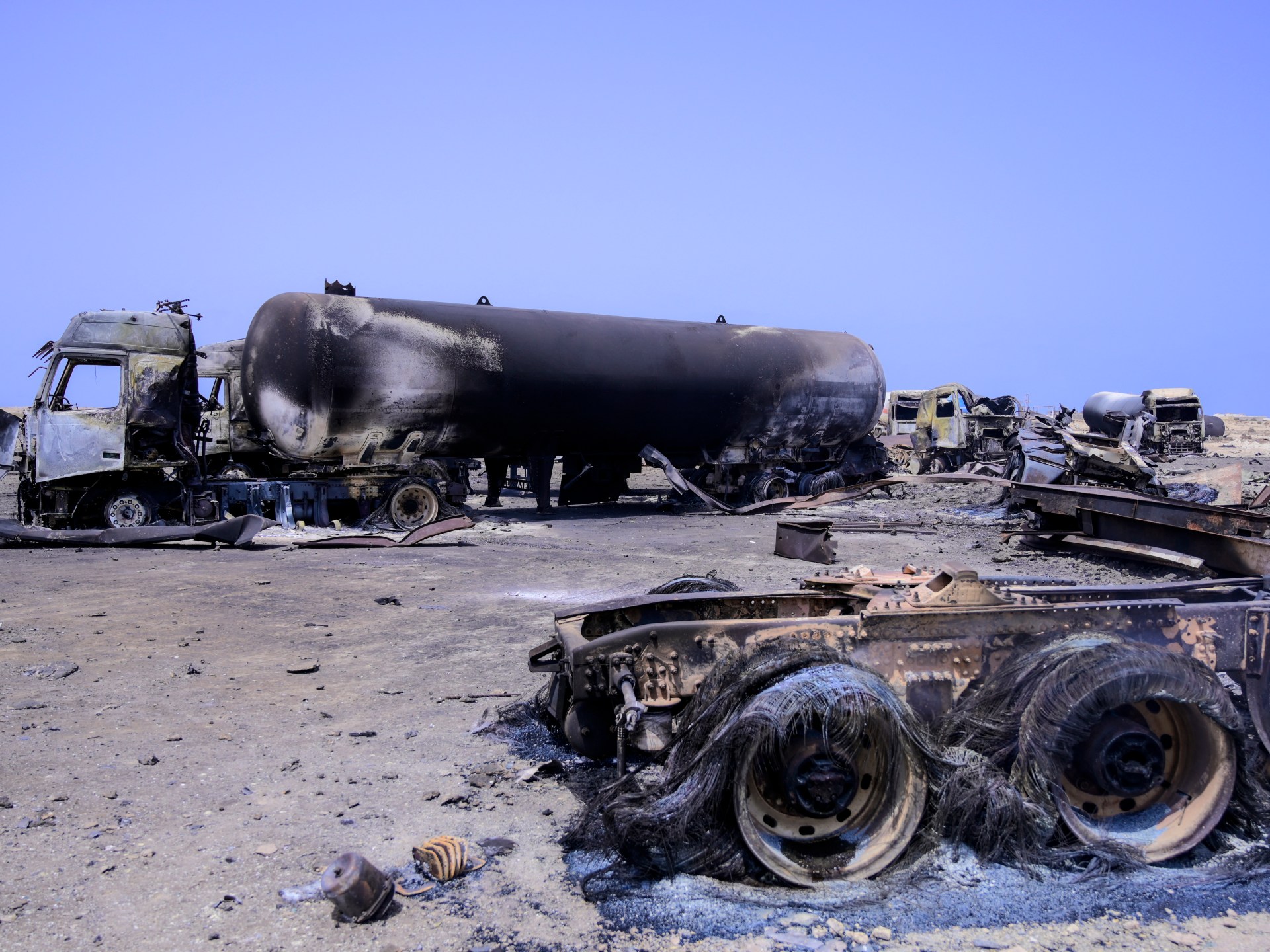
UN chief Antonio Guterres says he is ‘gravely concerned’ about US air strikes this week on Yemen.
The United States has carried out 13 air strikes on Hodeidah’s port and airport, the Houthi-affiliated TV channel Al Masirah says, two days after a US air strike targeted the Ras Isa port, also in Hodeidah, killing at least 80 people and wounding more than 150.
Al Masirah also reported Saturday that three people were killed and four injured due to a US attack on al-Thawra, Bani Matar, and al-Safiah districts in the capital Sanaa.
The Houthis have promised to carry out “more operations” despite the ongoing US attacks.
US President Donald Trump’s administration announced a major military offensive against the Houthis a few weeks ago. It said the air strikes are aimed at forcing the Houthis to stop threatening ships sailing on the Red Sea on a route crucial to international trade.
Since November 2023, the group has reportedly launched more than 100 attacks on vessels it says are linked to Israel in response to Israel’s war on Gaza and in solidarity with Palestinians.
On Friday, Houthi official Mohammed Nasser al-Atifi told Al Masirah that the “American enemy’s crimes” will not deter the Yemeni people from supporting Gaza, but “rather will strengthen their steadfastness and resilience”.
The Houthis, also known as Ansar Allah or “supporters of God”, are an armed group that controls most parts of Yemen, including Sanaa. The group emerged in the 1990s but rose to prominence in 2014 when it seized Sanaa and forced President Abd-Rabbu Mansour Hadi to flee the country.
United Nations Secretary-General Antonio Guterres “is gravely concerned about the airstrikes conducted by the United States over the course of 17 and 18 April in and around Yemen’s port of Ra’s Isa, which reportedly resulted in scores of civilian casualties, including five humanitarian workers injured,” Guterres spokesman Stephane Dujarric said in a statement on Saturday.
Guterres expressed fears of damage to the port and “possible oil leaks into the Red Sea”, Dujarric added.
The strikes on Ras Isa aimed to cut off supplies and funds for the Houthis, the US military said. It was the deadliest attack of Washington’s 15-month campaign against the Iran-aligned group.
About 70 percent of Yemen’s imports and 80 percent of its humanitarian assistance pass through the ports of Ras Isa, Hodeidah and as-Salif.
Ras Isa also is the terminus of Yemen’s main oil pipeline, which, along with its port, are “critical and irreplaceable infrastructure” in Yemen, according to the UN Development Programme.
Middle East
Iran says progress in nuclear talks with US, confirms third round next week | News

After technical talks, senior negotiators expected to reunite on April 26, according to Iran’s foreign ministry.
Iran and the United States have completed a second round of indirect nuclear negotiations, which Iran’s foreign minister has described as “constructive” and moving forward with further meetings planned in the coming week.
Abbas Araghchi and US Middle East envoy Steve Witkoff held four hours of indirect talks at Oman’s embassy in the Italian capital, Rome, on Saturday, according to Araghchi.
“We succeeded in reaching a better understanding on certain principles and goals,” the diplomat was quoted by the semiofficial Tasnim news agency as saying. “The negotiations were conducted in a constructive atmosphere and are progressing.”
There has been no readout yet of the meeting from the US side.
The delegations – led by Araghchi and Witkoff, a billionaire real estate executive whom US President Donald Trump has dispatched on numerous foreign policy missions – stayed in separate rooms in the embassy as Omani Foreign Minister Badr al-Busaidi shuttled messages between them, according to Iranian officials.
Iran’s Ministry of Foreign Affairs said the parties will hold more indirect, technical-level talks in the coming days, followed by another meeting with senior officials on April 26.
There were useful indirect talks today between Iran and the United States conducted by Oman Foreign Minister in a constructive atmosphere.
The two sides agreed to continue the indirect talks in few days at technical level to be followed by another round at their own level on…
— Esmaeil Baqaei (@IRIMFA_SPOX) April 19, 2025
“I hope that after next week’s technical sessions, we’ll be in a better position,” Araghchi said, according to Tasnim. “There’s no reason for excessive optimism or pessimism.”
‘Negotiations to pick up’
Al Jazeera’s James Bays, reporting near the Omani diplomatic compound in Rome, said the Iranian response was “very positive” for a delegation that “had seemed pretty negative going into the talks”.
Next week’s planned talks mean “the pace of negotiations is going to be picked up”, Bays said.
The latest meeting comes a week after Iran and the US came together in Muscat for their first high-level discussions since Trump in 2018 unilaterally abandoned a landmark nuclear accord signed and brokered by world powers in 2015.
The Iranians “are looking for a kind of consistency when it comes to the current talks”, Al Jazeera’s Tohid Asadi reported from Tehran.
Will US accept civilian nuclear programme?
Western governments, including the US, have long accused Iran of seeking to develop nuclear weapons – an allegation Tehran has denied, insisting its nuclear programme is solely for peaceful civilian use. On Wednesday, the head of the International Atomic Energy Agency, Rafael Grossi, said Iran was “not far” from possessing a nuclear weapon.
Grossi was also in Rome on Saturday meeting Italian Foreign Minister Antonio Tajani. Grossi’s nuclear watchdog would likely be central in verifying compliance by Iran should a deal be reached, as it did with the 2015 accord.
The US and Iran have had no diplomatic relations since shortly after Iran’s 1979 Islamic Revolution. After returning to office in January, Trump revived his “maximum pressure” sanctions campaign against Tehran, but in March, he sent a letter to Iranian Supreme Leader Ali Khamenei calling for renewed negotiations – while warning of military consequences if diplomacy fails.
“I’m not in a rush” to use force, Trump said on Thursday. “I think Iran wants to talk.”
On Friday, Araghchi said the US showed “a degree of seriousness” during the first round of talks but questioned Washington’s “intentions and motivations”.
Bays said the heart of the dispute remains whether Iran may maintain a civilian nuclear programme – or whether, as hardliners in Washington insist, it must dismantle its nuclear programme entirely.
“All they’ve been talking about last week in Muscat and here in Rome is a framework for the discussions and what they want to achieve,” Bays said. “They have not been discussing the nuclear detail, … and the devil is in the detail on these things.”
-

 Education2 days ago
Education2 days agoHarvard’s battle with the Trump administration is creating a thorny financial situation
-

 Sports2 days ago
Sports2 days agoClint Dempsey speaks to CNN over his concerns over the USMNT heading into its home World Cup
-

 Middle East1 day ago
Middle East1 day agoTunisian court hands opposition figures lengthy jail terms | Human Rights News
-

 Europe2 days ago
Europe2 days agoTrump’s ‘lone ranger’: How Steve Witkoff became the defacto point man on America’s foreign policy challenges
-
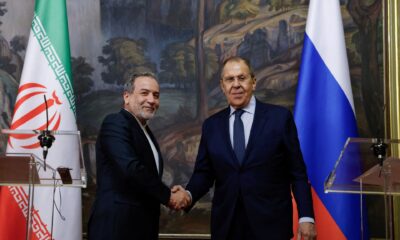
 Conflict Zones2 days ago
Conflict Zones2 days agoIran has ‘doubts’ about US intentions ahead of nuclear talks | Politics News
-

 Conflict Zones2 days ago
Conflict Zones2 days ago‘How do I live like this?’ asks Gaza boy who lost arms in Israeli attack | Gaza News
-

 Conflict Zones2 days ago
Conflict Zones2 days agoTrump says US may ‘pass’ on helping end war if Russia, Ukraine resist deal | Russia-Ukraine war News
-
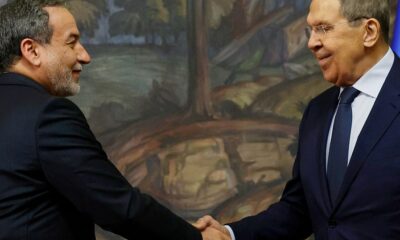
 Africa2 days ago
Africa2 days agoIran seeks Russia’s support for its nuclear talks with US




